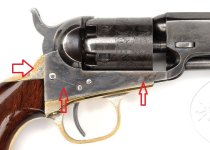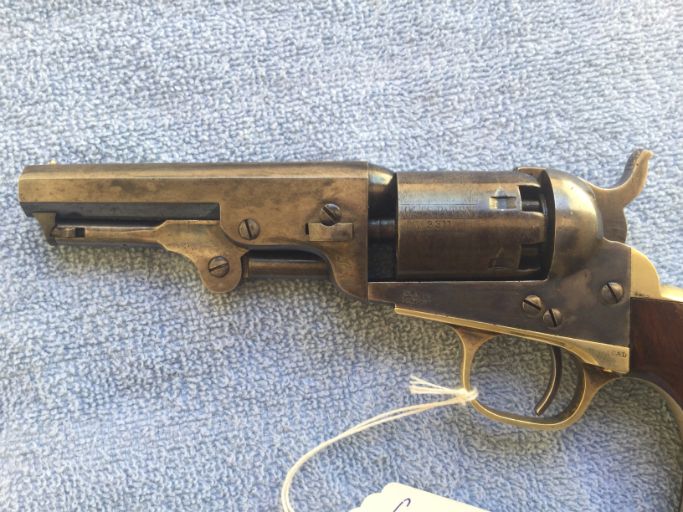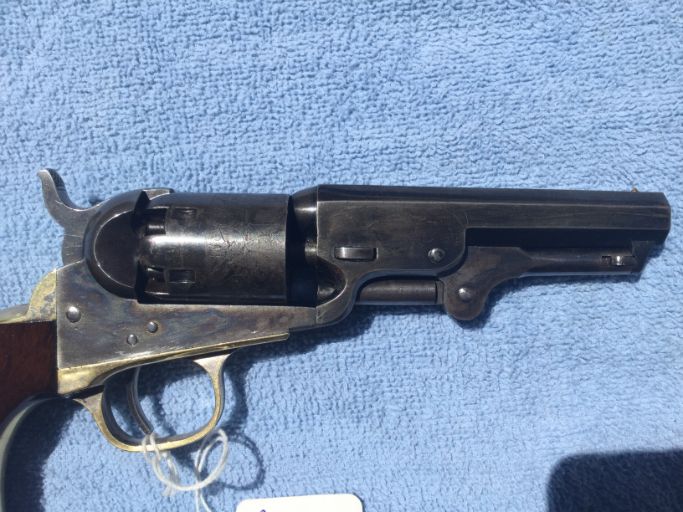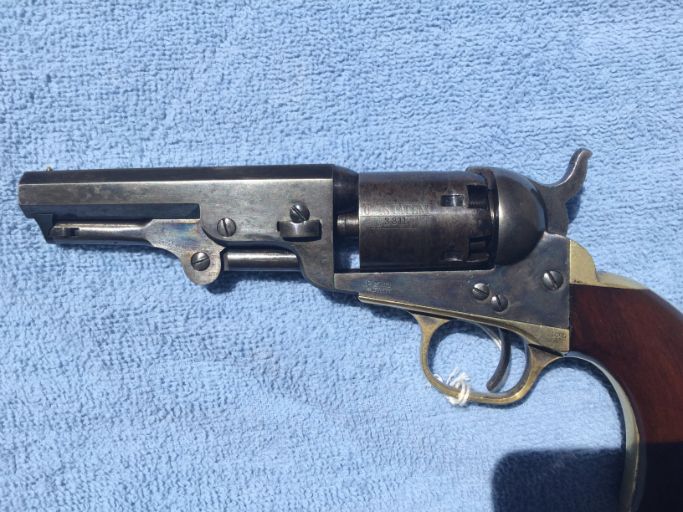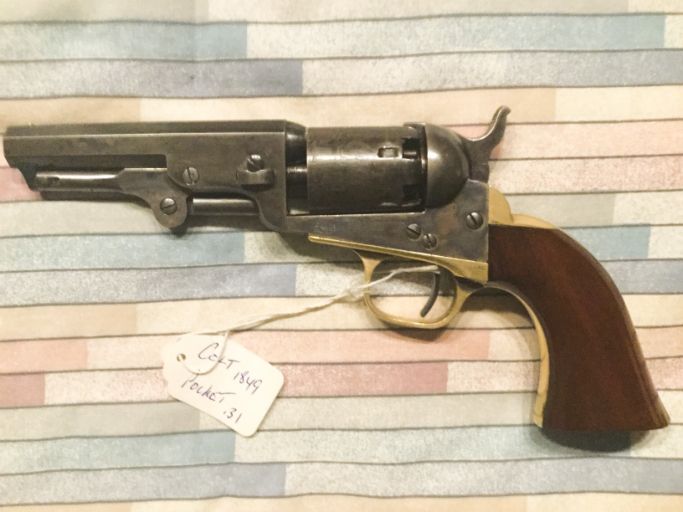OK. The general concensus is that it has been cold blued. I respect everyones opinion here. But my curiosity gets the best of me sometimes. For the price of only shipping costs, I think I have something to learn here. Please bear with me now.
So I had the seller ship it to me with a several day return policy. I have already purchased an expensive Baby Dragoon from him that has turned out very well, as verified by an old time collector. I think he will honor the mutually agreed upon return policy on his allegedly 100% authentic 1849 Pocket. This pistol has been examined by an antique firearms specialist at a recent auction, where the seller purchased it.
I have examined it carefully. It is mechanically and physically 100%. This is the best preserved pistol that I have seen. I had wondered why it was shiny in the pictures. Polishing? However, this is because there is a very thin layer of grease all over it as a preservative. Incredible. There is an actual mustard patina on the straps. The cylinder scene is at least 95% there. The case colors are there. The finish is mostly shades of gray. The recoil shield has a metallic silver. I do not think this pistol has ever been fired.
I examined the markings, which are the SNs and address stamp, and all look great and very well defined. There is no indication of a (re)bluing that possibly has taken place, as far as I can tell at this point. I have seen what a rebluing can do to these types of markings. I smelled the finish and breech end of the cylinder closely and just smelled nothing but perhaps a bit of grease. Nothing is definitive here. There is a type of yellow-reddish-brown patina on the cylinder. Perhaps a glaze from dried grease? But the grease is probably synthetic. There are also no scratches or damage that I can see.
I will arrrange time with that antique collector, who is also a dealer, for an assessment of this pistol. He will be available Tuesday. Is there any way I can further examine this pistol to detect a rebluing, or specifically, a cold bluing? I guess I can clean off all of the surface grease to see how it looks and if it starts smelling of sulfur. I think that is what I may do next. Ballistol? Mineral spirits? CLP? And a wipe down with terry cloth?
Bob

